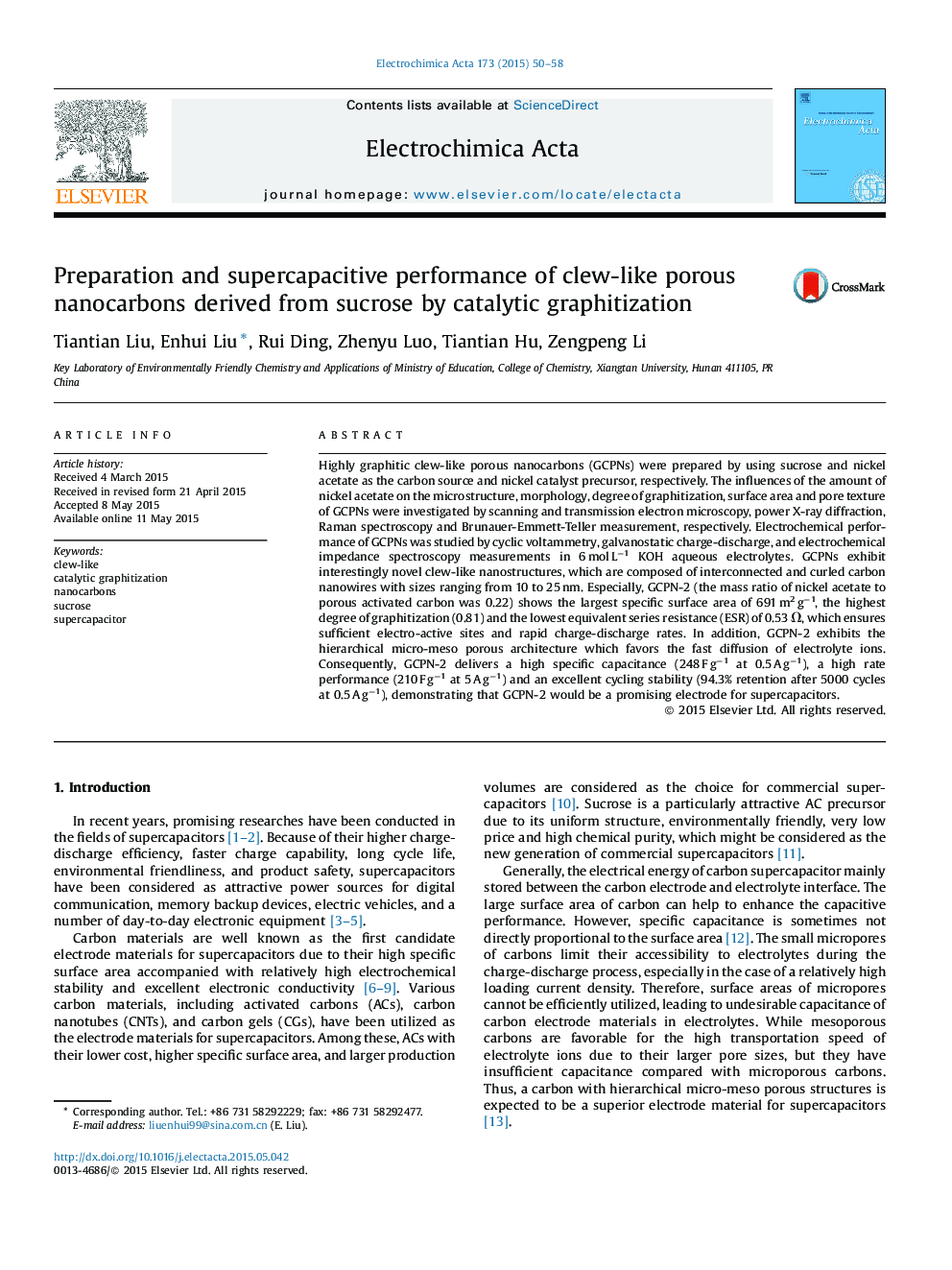| Article ID | Journal | Published Year | Pages | File Type |
|---|---|---|---|---|
| 183757 | Electrochimica Acta | 2015 | 9 Pages |
•Nanocarbons with highly graphitic clew-like nanostructures are firstly reported.•The novel nanostructure contains interconnected and curled carbon nanowires.•The influences of the amount of nickel acetate were investigated.•GCPN-2 has a high degree of graphitization and a low equivalent series resistance.•The specific capacitance is 248 F g−1 at 0.5 A g−1, and it remains 85% at 5 A g−1.
Highly graphitic clew-like porous nanocarbons (GCPNs) were prepared by using sucrose and nickel acetate as the carbon source and nickel catalyst precursor, respectively. The influences of the amount of nickel acetate on the microstructure, morphology, degree of graphitization, surface area and pore texture of GCPNs were investigated by scanning and transmission electron microscopy, power X-ray diffraction, Raman spectroscopy and Brunauer-Emmett-Teller measurement, respectively. Electrochemical performance of GCPNs was studied by cyclic voltammetry, galvanostatic charge-discharge, and electrochemical impedance spectroscopy measurements in 6 mol L−1 KOH aqueous electrolytes. GCPNs exhibit interestingly novel clew-like nanostructures, which are composed of interconnected and curled carbon nanowires with sizes ranging from 10 to 25 nm. Especially, GCPN-2 (the mass ratio of nickel acetate to porous activated carbon was 0.22) shows the largest specific surface area of 691 m2 g−1, the highest degree of graphitization (0.81) and the lowest equivalent series resistance (ESR) of 0.53 Ω, which ensures sufficient electro-active sites and rapid charge-discharge rates. In addition, GCPN-2 exhibits the hierarchical micro-meso porous architecture which favors the fast diffusion of electrolyte ions. Consequently, GCPN-2 delivers a high specific capacitance (248 F g−1 at 0.5 A g−1), a high rate performance (210 F g−1 at 5 A g−1) and an excellent cycling stability (94.3% retention after 5000 cycles at 0.5 A g−1), demonstrating that GCPN-2 would be a promising electrode for supercapacitors.
Graphical abstractFigure optionsDownload full-size imageDownload as PowerPoint slide
